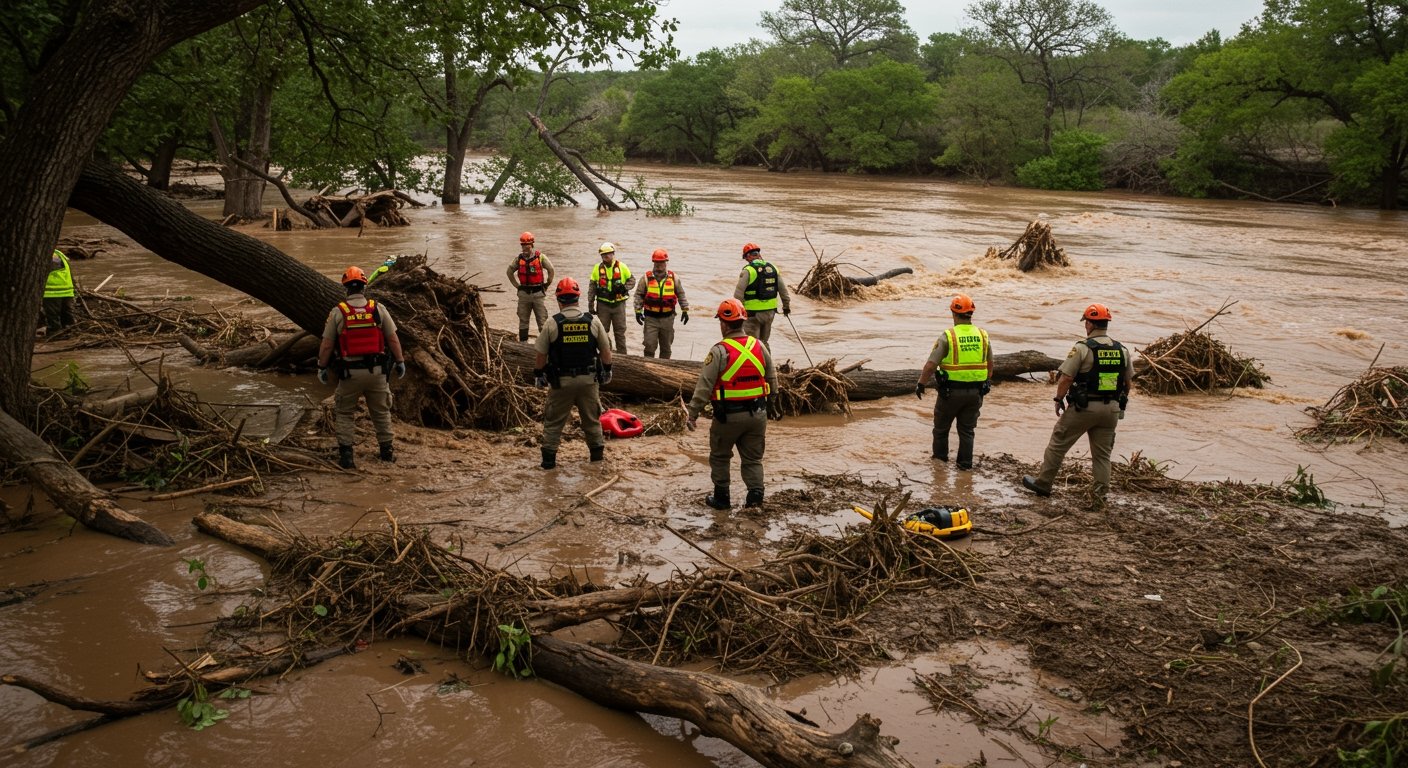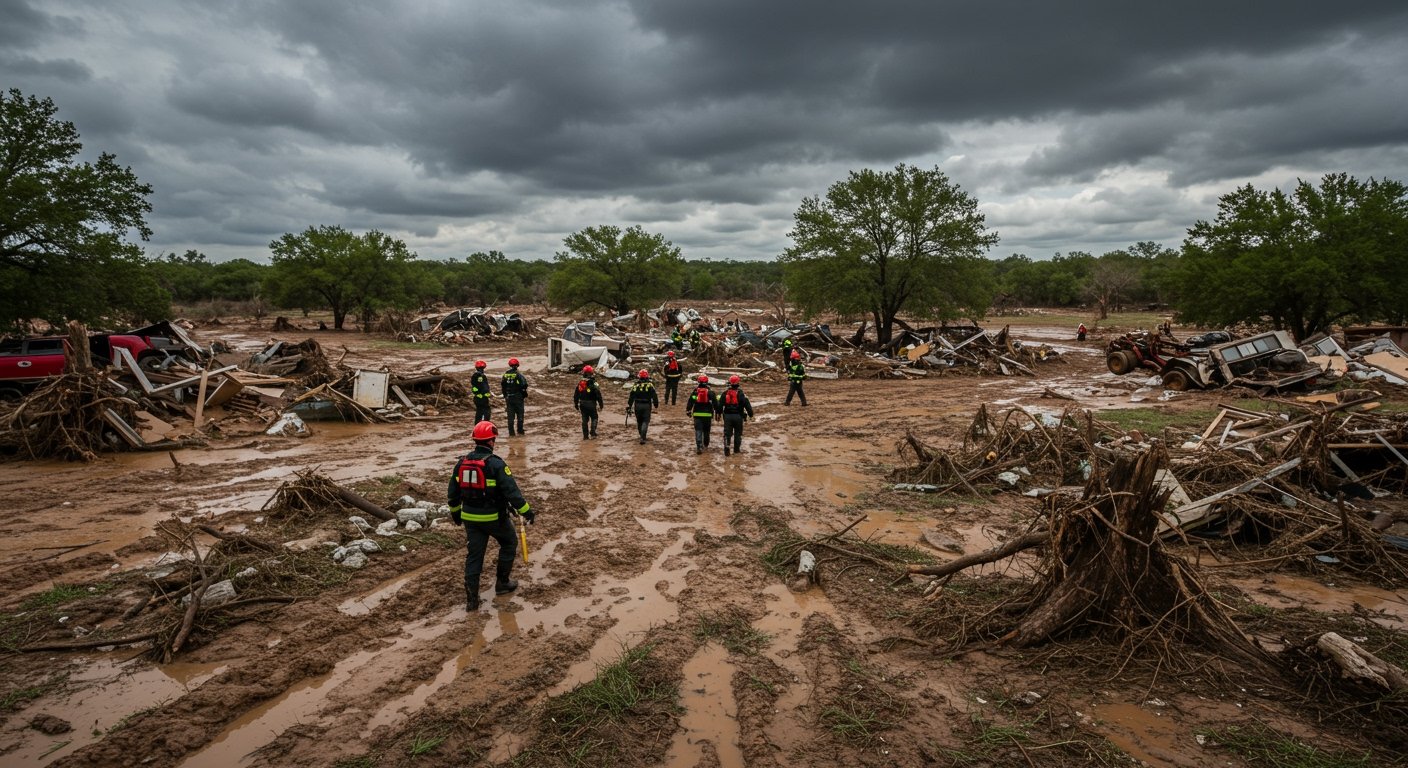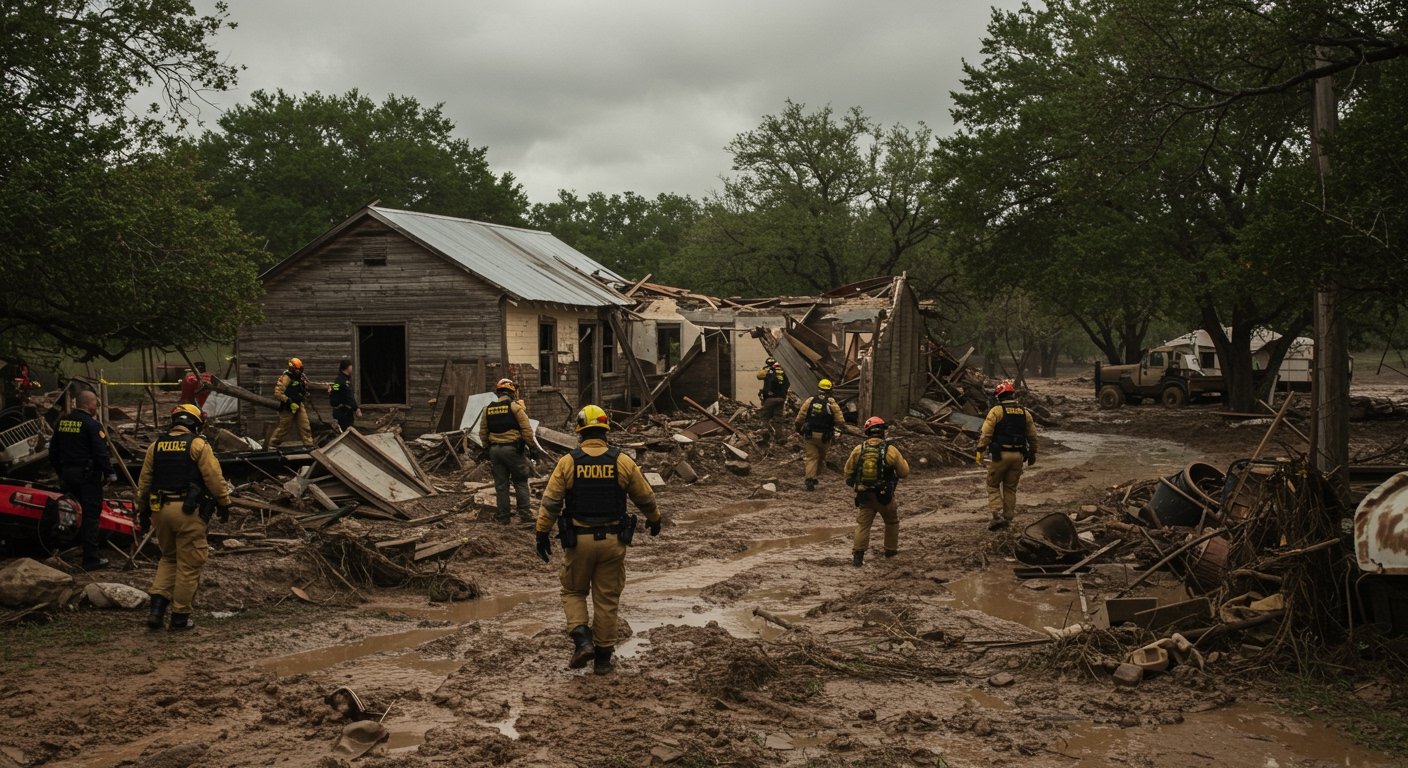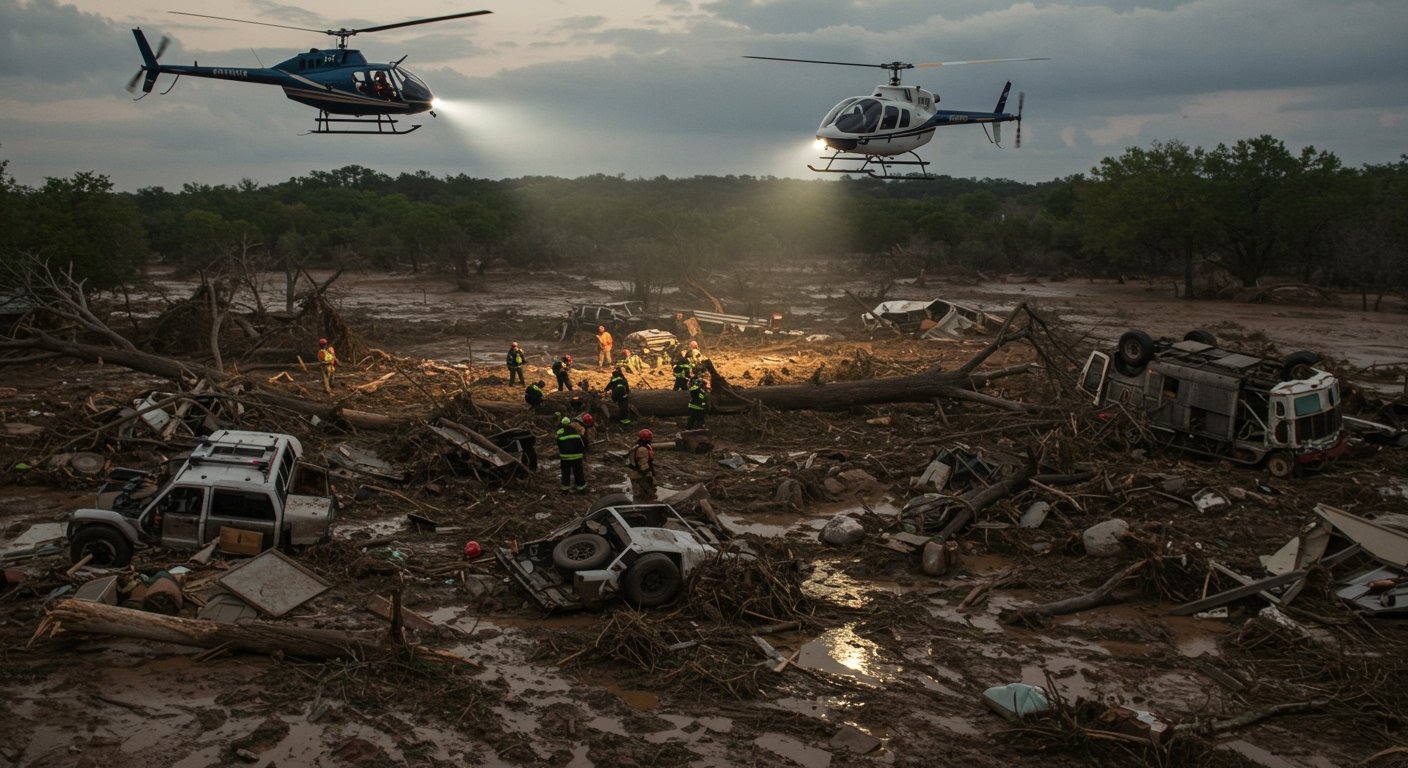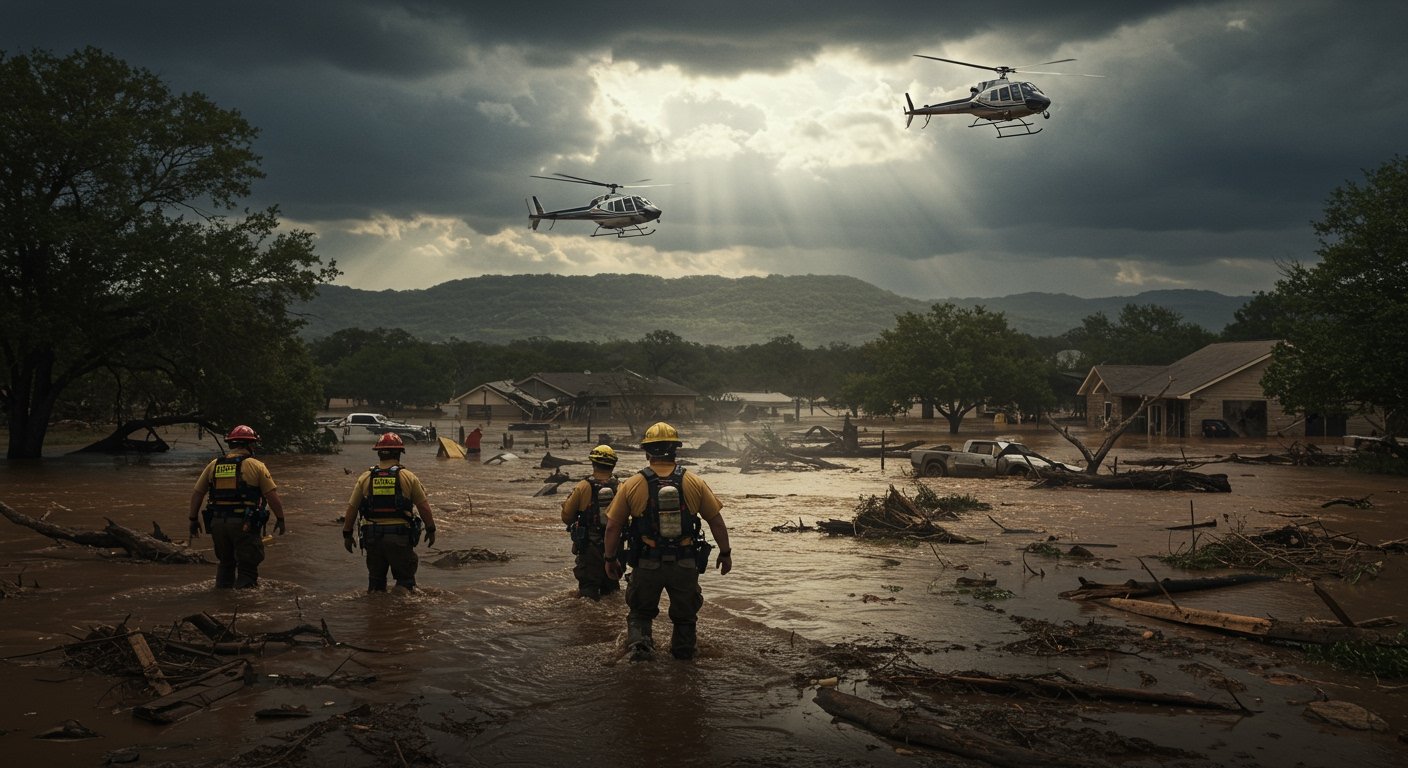KERR COUNTY, Texas – A catastrophic flash flood event, striking the Texas Hill Country over the recent Fourth of July weekend, has resulted in a significant loss of life, with authorities confirming a climbing death toll in the hardest-hit areas. As of Sunday, July 6, official figures placed the confirmed fatalities in Kerr County alone at 68. This grim tally includes 28 children and 40 adults, highlighting the devastating impact on families and communities.
The unprecedented flooding unfolded rapidly, primarily affecting areas along the Guadalupe River. The overall death toll across the broader Central Texas region impacted by the severe weather is currently reported to be at least 79, underscoring the widespread nature of the disaster.
Scale of Human Loss Emerges in Kerr County
The confirmation of 68 deaths in Kerr County paints a stark picture of the flood’s intensity. The county, known for its scenic riverfront properties and summer camps, bore the brunt of the flash flooding. The breakdown of victims – a majority being adults but with a substantial number of children – speaks to the diverse population caught unaware by the sudden deluge that transformed tranquil waterways into torrents.
Rescue and recovery operations have been continuous since the floodwaters began to recede slightly. First responders have faced challenging conditions, navigating debris-strewn landscapes and powerful residual currents in their search for survivors and victims.
Severe Impact on Communities and Camps
Among the locations severely impacted is Camp Mystic, a long-established Christian girls’ summer camp situated near Hunt, Texas, along the Guadalupe River. Officials at the camp reported on July 6 that the flood had a direct and devastating effect. While many campers and staff were safely evacuated or accounted for, concern remains for those still missing.
As of the latest reports from Camp Mystic officials on July 6, 10 campers and one counselor remained unaccounted for. Search efforts in and around the camp area have been a primary focus for rescue teams, operating under difficult circumstances amidst the widespread destruction.
Understanding the Flood’s Ferocity
The rapid and dramatic rise of the Guadalupe River was the primary destructive force. Fueled by heavy rainfall early on Friday, July 4, the river levels escalated with alarming speed. Reports indicate the Guadalupe River rose by an astonishing 26 to 36 feet in just a few hours, a rate and magnitude that left little time for warning or evacuation for those in low-lying areas or near the riverbanks.
This swift and powerful surge created conditions characteristic of a flash flood – overwhelming infrastructure, sweeping away structures, vehicles, and anything caught in its path. The timing of the event, coinciding with the Independence Day holiday weekend when many were enjoying outdoor activities or vacationing by the river, likely contributed to the high number of casualties and missing persons.
Coordinated Response and Calls for Aid
In response to the disaster, Texas Governor Greg Abbott issued a disaster declaration for the affected counties, acknowledging the severity of the situation and initiating state-level emergency protocols. Furthermore, the Governor has formally requested federal aid to support the extensive recovery efforts that will be necessary in the wake of the flood.
The search and rescue operation represents a massive, multi-agency undertaking. Hundreds of first responders, drawn from over 20 agencies, including local law enforcement, fire departments, state agencies, and volunteer organizations, are actively involved. Their work encompasses searching vast areas along the river, through damaged properties, and utilizing aerial surveillance and specialized water rescue teams.
The focus remains on locating the missing and providing assistance to the displaced. The scale of the devastation necessitates a sustained and coordinated effort as communities in the Texas Hill Country begin the long process of assessing the damage and recovering from this tragic natural event.


